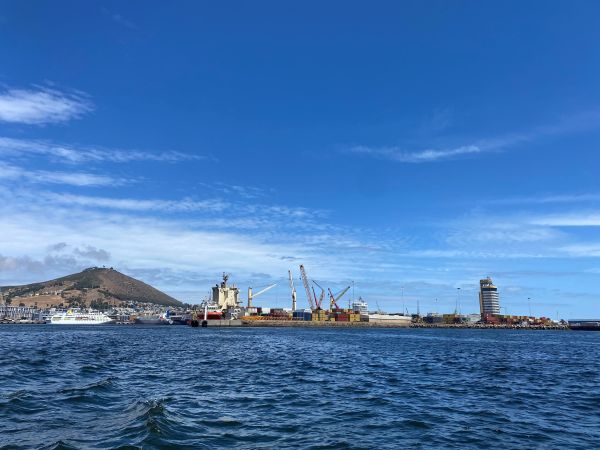A recent study by Link Supply Chain Management, owned by several of the Western Cape’s leading fruit exporting companies, including Tru-Cape Fruit Marketing, demonstrates the significant advantages achieved through port privatisation across Africa. The findings underscore the urgent need to privatise the port of Cape Town to unlock similar benefits for the Western Cape economy.
“Our study has proven that South African ports will eventually be privatised, and delaying the process will only delay sure economic benefits. All should be done to fast-track the process,” says Chris Knoetze, managing director of Link Supply Chain Management.
According to Danica Potgieter, logistics coordinator at Link Supply Chain Management, privatisation has redefined port operations across Africa.
“Major hubs like Tema (Ghana), Abidjan (Côte d’Ivoire), Tanger Med (Morocco), and Lomé (Togo) transitioned from slow, congested state-run systems into globally competitive trade engines shortly after privatisation. Meanwhile, South African ports like Durban and Cape Town continue to struggle with delays, inefficiency, and infrastructure bottlenecks – costing the economy and weakening trade competitiveness.”
Across the continent, Potgieter found that privatisation has consistently led to:
- Crane productivity improvements: Most privatised ports operate at 25 to 40 gross crane moves per hour (GCH), while non-privatised ports, like Cape Town, maintain an average of 8 to 15.2 GCH;
- Investment increased by $300 million to more than $1.5 billion;
- Dwell time reductions
- Higher throughput capacity, accommodating larger vessels and more cargo;
- Enhanced regional integration, driving logistics growth across borders.
“Privatisation has also sparked broader benefits, such as job creation, improved trade competitiveness, and strategic management,” Potgieter explains.
“The key drivers of these changes include successful global operators with KPI-driven operations and performance incentives; infrastructure upgrades such as deeper berths and new terminals; investments in modern cranes, yard systems and RTGs; as well as digital cargo tracking and smart port systems.”
Potgieter found that African countries took an average of thirty to fifty years to privatise their ports after gaining political independence, but once these ports opened their doors to private-sector partners, the transformation was rapid and undeniable.
“More than thirty years after democracy and over sixty years since becoming a republic, South Africa has not yet privatised any of its container terminals. There is no reason to wait as long as other African countries to privatise our ports. The sooner we begin the process, the earlier we can unlock greater efficiency, ease bottlenecks, and modernise our port infrastructure. All these aspects will benefit the South African economy and strengthen our global competitiveness,” Potgieter emphasised.
Current interventions fall short of delivering necessary changes
Knoetze believes GCH (basically loading containers faster) is the key indicator of port terminal productivity. The higher the GCH, the quicker a container ship can be loaded, resulting in shorter turnaround times and eventually also lower freight costs and operational costs for shipping lines.
Although Transnet embarked on a turnaround strategy in April last year, improvements have not been significant enough, as recently stated by Hortgro.
Between November 2023 and March 2024, the average GCH in the port of Cape Town was 11.8, while the port was windbound for 41 hours. Productivity has increased slightly to 13.7 GCH during April to November last year, while weather delays decreased to 28 hours. Another slight increase in GCH to 14 moves per hour was experienced during December to April this year. The port was windbound for 38 hours per week during this period.
“Given several interventions, like new appointments and changes in Transnet’s senior management, the repair and maintenance of equipment, solving personnel matters, a focus on operational improvement, and capital investment in new RTGs in Cape Town’s container terminal, we should expect to see a step change in productivity to at least 20 GCH or more in the coming months. However, the process is too slow and still far removed from the 33 GCH reported by Transnet in November 2012,” explains Knoetze.
Privatisation enhances efficiency, attracts investment
Therefore, he believes it is essential for South African ports to welcome private partners on board sooner rather than later.
“Despite being one of Africa’s largest economies, South African ports rank among the worst in efficiency. Durban, Cape Town, Port Elizabeth, and Ngqura face chronic equipment failures, long delays, and outdated infrastructure, which hinders international competitiveness. Meanwhile, Namibia’s Walvis Bay, which first discussed privatisation in 2023 and officially began operating under private management earlier this year, is already expanding its capacity and transshipment flows. Another example is Lomé in Togo, which once was seen as a modest port but now, after privatization, rivals Durban in strategic importance.
“Recently, the MSC Diletta, a 24 000 TEU (twenty-foot equivalent unit) vessel which is 400 m long and 61 m wide and one of the world’s largest container ships, docked at Lomé. Lomé has a crane productivity of 35 GCH and sufficient support services like tugs and pilots to set this port up as an integrated regional hub connecting to all major terminals in the sub-region,” explains Knoetze.
Another example is the terminal operator DP World’s investment of $165 million in an expansion project at the port of Maputo, which will enable the port to handle much bigger vessels. This will also improve their competitive position as an alternative to South African ports.
These examples highlight the potential benefits of privatisation in enhancing operational efficiency and attracting investment to build infrastructure that can accommodate bigger vessels, a global trend in shipping.
While Knoetze welcomes positive developments around privatisation, such as Minister of Transport Barbara Creecy’s request in March for private sector participation in rail and port freight logistics, the focus should now be on speedy evaluation, implementation, and execution with excellence, he appealed to the government.
He believes that by adopting terminal concessions, public-private partnerships (PPPs), or full privatisation, South Africa can reduce congestion and port delays, modernise its infrastructure, attract capital, improve trade flow and cost efficiency, and reclaim its role as the gateway to Southern Africa.
Roelf Pienaar, managing director of Tru-Cape Fruit Marketing, says privatising the port of Cape Town is not merely an administrative change—it’s a vital component of the fruit exporting industry.
“As South Africa’s leading apple and pear exporter, we are losing valuable time and facing escalating costs due to the port’s ongoing inefficiencies. A swift transition to a privatised model will modernise our infrastructure, significantly reduce turnaround times, and ensure that we remain competitive in the global marketplace. We simply cannot afford to let these delays undermine our economic future.”
A comprehensive list of sources used in Link’s study on the privatisation of African ports is available upon request.








